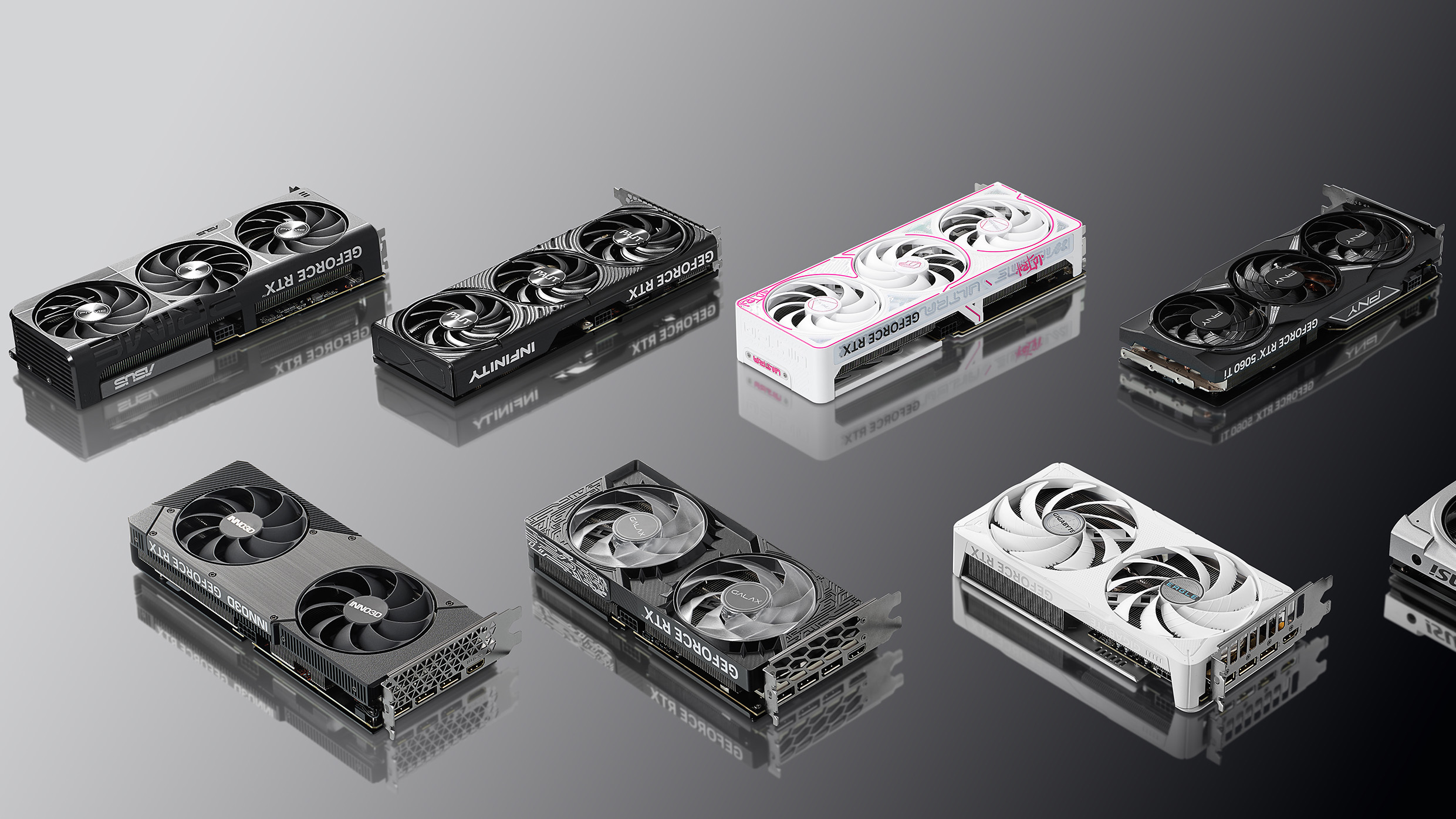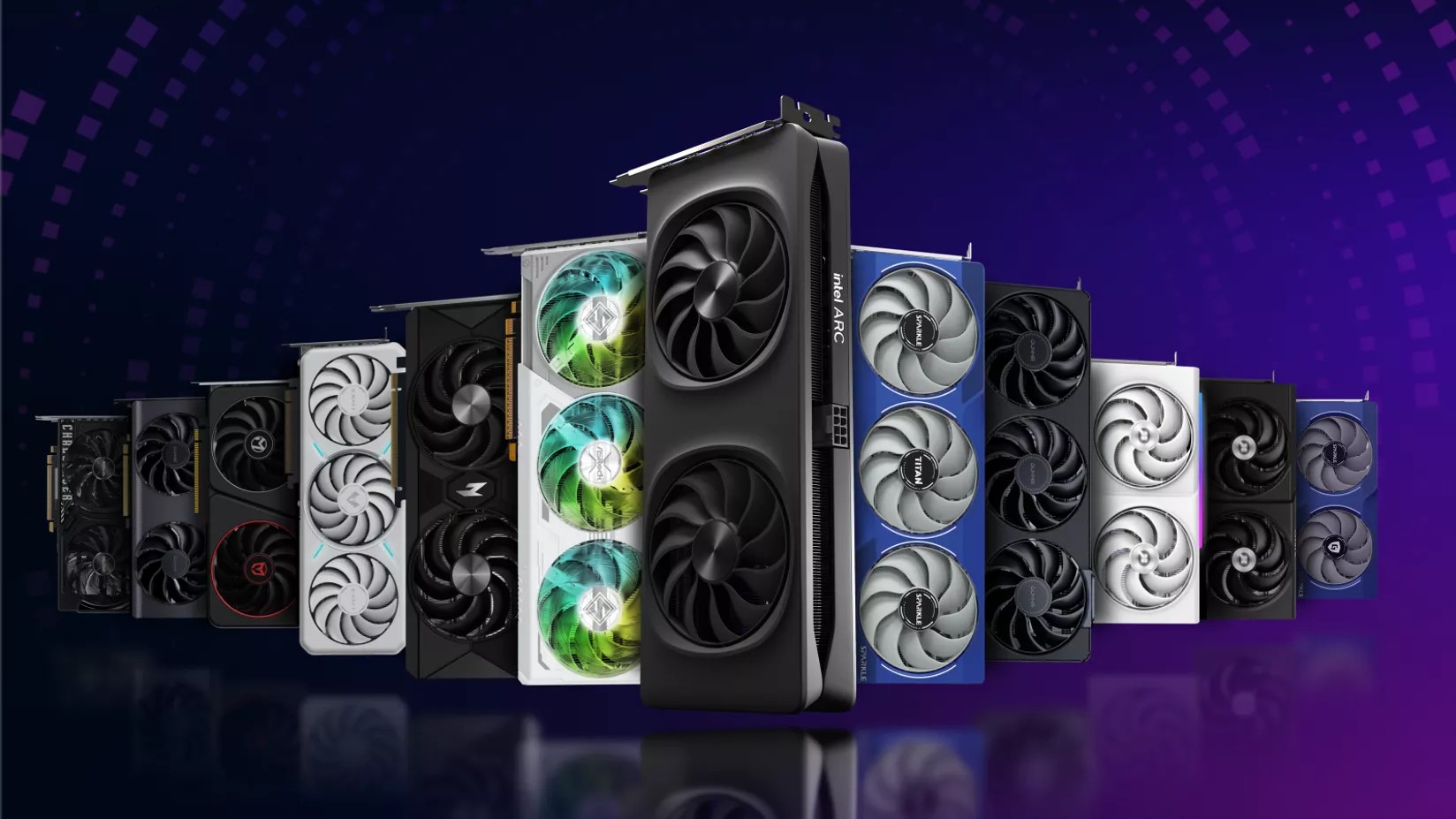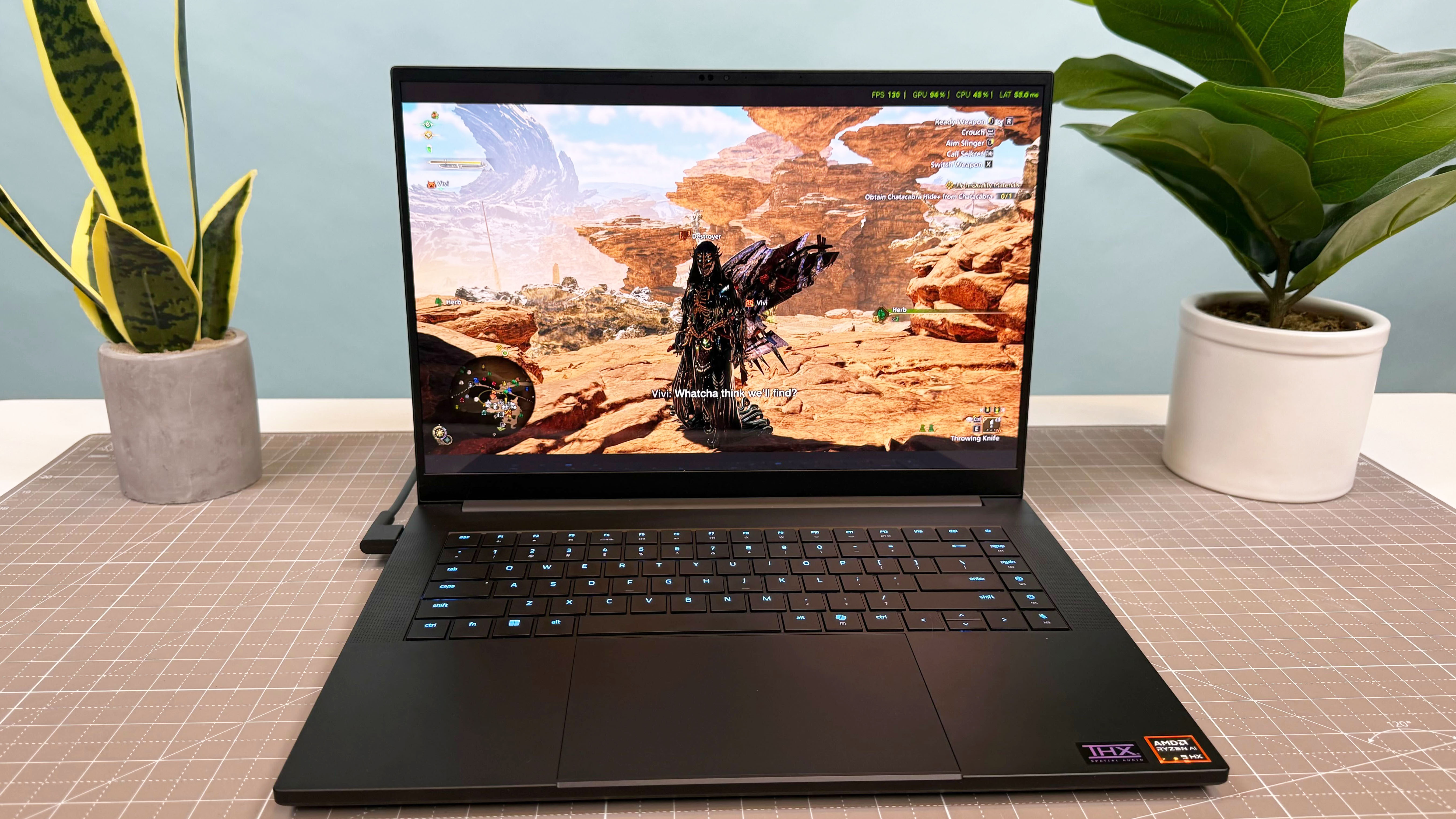Nvidia's affordable RTX 5060 is coming soon, but that's not the GPU I have my eyes on
Can DLSS 4 save Nvidia's budget card?

Nvidia is set to launch the last major desktop GPU in the RTX 50-series this month, but the RTX 5060 is going to have some steep competition.
Nvidia has picked May 19, 2025 as the launch date for the RTX 5060, which falls in line with the Computex tradeshow in Taipei, Taiwan later this month. That show is looking like it will be very GPU-heavy.
AMD is expected to launch its budget-friendly Radeon RX 9060 XT at Computex, and it seems Intel's Arc B-series "Battlemage" GPUs aren't done for this generation either.
New rumors suggest Intel will be launching a more powerful mid-range Arc B770 GPU in Taipei as well.
While we don't have a lot of concrete details on the Arc B770, what we do know about this possible Intel GPU does put Nvidia's RTX 5060 in a poor position.
But before we decide the RTX 5060 is dead on arrival, let's take a closer look.
Nvidia RTX 5060 vs Intel Arc B770 vs AMD Radeon RX 9060 XT: Hardware specs
| Header Cell - Column 0 | Nvidia RTX 5060 | Intel Arc B770 | Radeon RX 9060 XT |
|---|---|---|---|
Price | $299 | TBD | TBD |
Cores | Row 1 - Cell 1 | 32 Xe-cores | 32 cores |
VRAM | 8GB GDDR7 | 16GB | 16GB / 8 GB GDDR6 |
Memory bus | 128-bit | 256-bit | 128-bit |
Max Clock speed | 2.5 GHz | - | 3.2 GHz |
TGP / TBP | 145W | - | - |
The recent leaks on the Intel Arc B770 suggest that many of the specs will carry over from the A770, including the 32 Xe-core count, and 16GB VRAM. While not included in this week's leaks, Intel could also stick with the same 2.1 GHz boost clock and 225W TBP specs for the B770, though that's still to be determined as the B770 is expected to perform somewhere in the mid-range between the Nvidia RTX 5060 and the RTX 5060 Ti.
Sign up to receive The Snapshot, a free special dispatch from Laptop Mag, in your inbox.
It's uncertain if this will be GDDR6 or GDDR7 VRAM as it seems Team Blue is holding DDR7 VRAM to the next-gene "Celestial" graphics cards.
But, even if Intel opts for the older DDR6 memory, that's still going to be a bit more graphics power than the RTX 5060's 8GB of DDR7 VRAM. Most modern games require more than 8GB of dedicated video memory, which will make the RTX 5060 a hard sell for most PC gamers on desktop.
Even AMD is allegedly offering an 8GB and 16GB VRAM option on the RX 9060 XT.
From a VRAM perspective, the B770 or 9060 XT with 16GB appear to be better budget options. And if you take a look at the memory bus, the B770 will get more bandwidth for that increased VRAM over the 9060 XT.
So, Intel might become the budget GPU king this generation.
At least in terms of pure silicon strength.
Nvidia RTX 5060 vs Intel Arc B770 vs AMD Radeon RX 9060 XT: Software

As with any Nvidia RTX 50-series graphics card, the RTX 5060 will have access to Nvidia's latest software technology including DLSS (deep learning super sampling) 4 and multi frame generation. While some may prefer to stick with a GPU's raw graphics power over using software acceleration like super sampling or frame-gen, Nvidia's latest software offers better graphics quality and smoother frames than previous DLSS generations.
And DLSS 4 is now being supported on even more games. At the RTX 5090 launch earlier this year, DLSS 4 was only supported on 100 games, but that library is still growing with support now enabled on MechWarrior 5: Clans, New World: Aeternum, and Spirit of the North 2 as the latest titles to join the DLSS 4 library, with over 700 games featuring DLSS support of some kind.
AMD's Radeon RX 9060 XT is expected to feature AMD's latest FSR (Fidelity FX Super Resolution) 4 tech and advanced frame generation to compete with Nvidia's updated software. However, AMD's FSR is typically hardware agnostic, which means you can opt for FSR tech in games even if you use Nvidia or Intel hardware.
AMD's FSR 4 is now available on 37 games including some of the hottest titles, including Assassin's Creed Shadows, Call of Duty: Warzone, Kingdom Come Deliverance 2, and The Elder Scrolls IV: Oblivion Remastered. Over 400 games feature AMD FSR support across all four generations.
Intel's Arc B770 is expected to feature Intel's latest XeSS (Xe super sampling) 2, which can offer a frame-rate boost up to 4 times the raw silicon performance of an Intel Arc GPU. XeSS is now available on over 200 games, with XeSS 2 support on major titles like Assassin's Creed Shadows, Diablo IV, Marvel Rivals, and F1 '24.
Is DLSS 4 enough to save the RTX 5060?

With Intel entering the discrete GPU market with last generation's Arc A-series graphics, the budget and mid-range GPU market has gotten more crowded. And increased competition in a computing space often means gamers get better hardware.
Intel and AMD have both made decent strides in providing powerful but affordable GPUs, while Nvidia continues to dominate on the high-end.
But there is still some value to Nvidia's lower-end graphics cards. Nvidia's software support with a DLSS library of over 700 games is hard to beat. Even AMD's FSR 4 is only supported on just 37 games to date. Intel has a lot of catching up to do in order to offer a competitive experience with XeSS.
However, Nvidia's RTX 50-series cards do have some noted issues, particularly with older games. Titles using the 32-bit version of PhysX can't be played on an RTX 50-series GPU without using emulation, and while this mostly impacts older games, it has also meant newer PhysX games like Borderlands 3 don't run either.
While I was pretty excited for the RTX 5060 Ti as a budget option for my next GPU, I'm going to hold off and see how Intel and AMD's latest cards fare before making any decisions.
If Intel and AMD keep their prices on the B770 and RX 9060 XT competitive, this could finally be the generation where the most-used graphics card on the Steam Hardware Survey isn't an Nvidia GPU.
More from Laptop Mag
- Are bigger gaming laptops really better? Here’s how an RTX 5080 beat an RTX 5090.
- Rockstar just revealed more about GTA 6—but left PC gamers hanging
- Intel's 14A chips might finally prove a match for Apple Silicon

A former lab gremlin for Tom's Guide, Laptop Mag, Tom's Hardware, and TechRadar; Madeline has escaped the labs to join Laptop Mag as a Staff Writer. With over a decade of experience writing about tech and gaming, she may actually know a thing or two. Sometimes. When she isn't writing about the latest laptops and AI software, Madeline likes to throw herself into the ocean as a PADI scuba diving instructor and underwater photography enthusiast.
You must confirm your public display name before commenting
Please logout and then login again, you will then be prompted to enter your display name.
